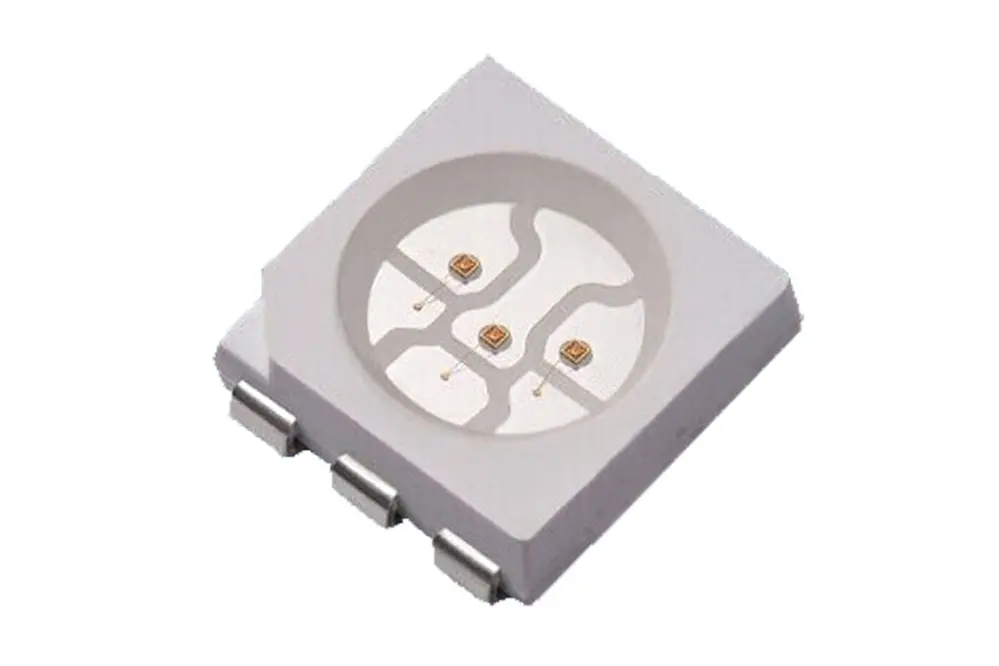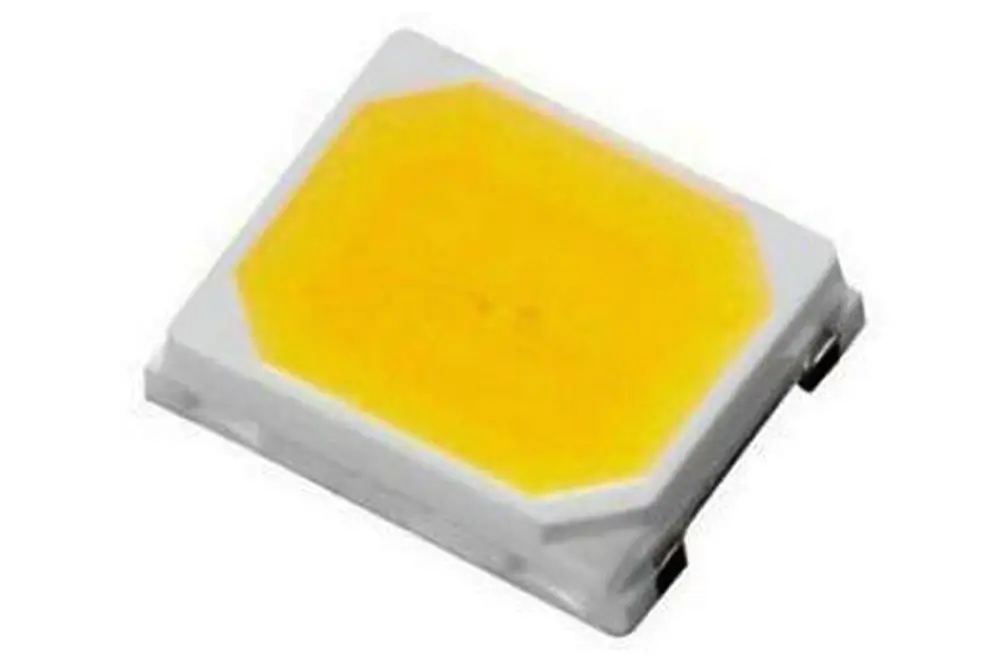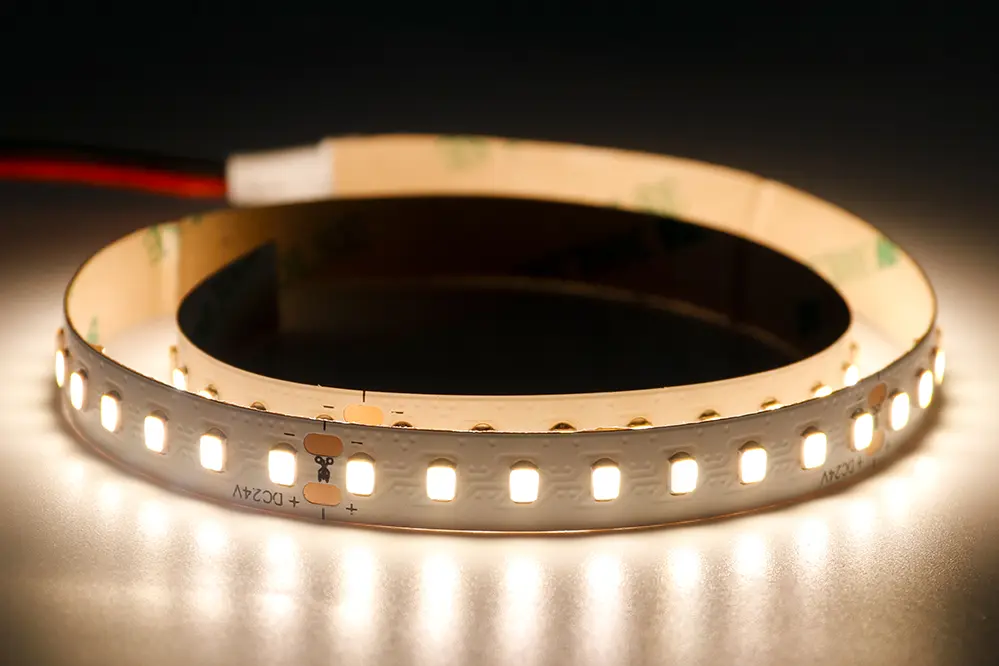5050 vs. 2835: Making the Right Choice for Your Lighting Needs
- 2024-04-06 13:19
- UNITOP
When it comes to lighting up your space, making the right choice can make all the difference. That's why we're here to shed some light on the age-old debate: 5050 vs. 2835 LED lights. Whether you're a lighting enthusiast or a seasoned professional, understanding the nuances between these two popular LED options is crucial for achieving the perfect ambiance. So, let's embark on this illuminating journey together and discover which option suits your lighting needs best.
In the world of LED lights, the battle between 5050 and 2835 has been raging on for years. Both options have their own set of advantages and disadvantages, making the decision-making process a challenging one. But fear not! We're here to break it down for you, providing you with the knowledge and insights you need to make an informed choice.
Now, let me introduce myself. I'm Tom, and I've been deeply immersed in the LED lighting industry since 2005. Over the years, I've witnessed the evolution of LED technology and gained a wealth of knowledge and expertise. Drawing from my experience and research, I've meticulously crafted this blog post to help you navigate the complexities of the 5050 vs. 2835 debate. Rest assured, you're in good hands.
So, are you ready to shed some light on the differences between 5050 and 2835 LED lights? Let's dive right in! Together, we'll explore the pros and cons, consider important factors, and ultimately empower you to make the right choice for your unique lighting needs. Get ready to illuminate your space like never before!
Understanding the Difference Between 5050 and 2835 LED Lights
Before we dive into the specifics, let's take a moment to understand the key differences between 5050 and 2835 LED lights. These numbers refer to the size of the SMD LED chips used in the lights. The 5050 LED chips are 5.0mm x 5.0mm, while the 2835 LED chips are slightly smaller at 2.8mm x 3.5mm. This size difference plays a significant role in determining the performance and characteristics of the LED lights.
Pros and Cons of 5050 LED Lights

Advantages of 5050 LED Lights
5050 LED lights are known for their brightness and versatility. With larger LED chips, they can emit a higher level of light output, making them ideal for applications where brightness is crucial, such as task lighting or accent lighting. Additionally, 5050 LED lights often come in RGB (Red, Green, Blue) configurations, allowing for a wide range of color options and dynamic lighting effects.
Disadvantages of 5050 LED Lights
One of the drawbacks of 5050 LED lights is their relatively higher power consumption compared to other options. This means they may not be the most energy-efficient choice, especially for long-duration usage. Additionally, due to their larger size, 5050 LED lights may not be as flexible or suitable for installations in tight spaces or curved surfaces.
Pros and Cons of 2835 LED Lights

Advantages of 2835 LED Lights
2835 LED lights offer several advantages that make them a popular choice in many lighting applications. Despite their smaller size, they can still provide ample brightness for most residential and commercial needs. Moreover, 2835 LED lights are highly energy-efficient, consuming less power while delivering comparable illumination. This makes them an excellent choice for those seeking to reduce energy costs and minimize environmental impact.
Disadvantages of 2835 LED Lights
While 2835 LED lights excel in energy efficiency, they may not offer the same level of brightness as their 5050 counterparts. This can limit their suitability for applications where high levels of illumination are required. Additionally, the smaller size of the LED chips may result in a narrower beam angle, which can affect the light distribution and coverage area.
Factors to Consider When Choosing Between 5050 and 2835 LED Lights

When deciding between 5050 and 2835 LED lights, several factors should be taken into account:
Brightness and Luminosity
Consider the level of brightness required for your specific lighting needs. If you need intense illumination or vibrant colors, 5050 LED lights may be the better choice. However, if you're looking for energy-efficient lighting that still provides sufficient brightness, 2835 LED lights can be a suitable option.
Energy Efficiency
Evaluate the energy efficiency of the LED lights, especially if you plan to use them for extended periods. 2835 LED lights generally consume less power, making them a more sustainable and cost-effective choice in the long run.
Size and Flexibility
Assess the installation requirements and constraints of your lighting project. If you have limited space or need to install lights in curved or tight areas, the smaller size and flexibility of 2835 LED lights may be advantageous. On the other hand, if space is not a concern, and you prioritize brightness and versatility, 5050 LED lights might be the better fit.
Cost
Consider your budget and the overall cost of the LED lights. While 5050 LED lights may offer more brightness and color options, they tend to be slightly more expensive. If cost is a significant factor, 2835 LED lights can provide a cost-effective solution without compromising on quality.
FAQs
Which LED is better 5050 or 3528?
When choosing between the 5050 and 3528 LED options, it's important to consider their differences. The 5050 LED is larger in size, measuring at 5.0mm x 5.0mm, while the 3528 LED is smaller, measuring at 3.5mm x 2.8mm.
The larger size of the 5050 LED means it typically produces a brighter and more vibrant light output compared to the 3528 LED. This makes the 5050 LED a popular choice for applications where high brightness and vivid colors are desired, such as in signage or accent lighting.
On the other hand, the smaller size of the 3528 LED allows for a more discreet installation. Its compact design makes it suitable for applications where space is limited, such as in narrow lighting strips or small fixtures.
In terms of energy efficiency, both the 5050 and 3528 LEDs are generally similar. However, due to its larger size, the 5050 LED may consume slightly more power than the 3528 LED.
Overall, the choice between the 5050and 3528 LED will depend on the specific requirements of your lighting project. If you need a brighter and more vibrant light output, the 5050 LED is a better option. Conversely, if you require a more discreet and space-saving solution, the 3528 LED would be more suitable.
Can 2835 LEDs replace 5050 in all cases?
2835 LEDs and 5050 LEDs are two common types of light emitting diodes (LEDs) used in the lighting industry. While both types serve similar purposes, there are some key differences between them.
2835 LEDs, also known as surface mount device (SMD) LEDs, are smaller in size compared to 5050 LEDs. They measure 2.8mm by 3.5mm, hence the name. Despite their smaller size, 2835 LEDs are known for their high brightness and energy efficiency. They are commonly used in various lighting applications, including backlighting, signage, and general illumination.
On the other hand, 5050 LEDs are larger in size, measuring 5.0mm by 5.0mm. This larger size allows 5050 LEDs to emit more light compared to 2835 LEDs. They are often used in applications that require higher light output, such as architectural lighting, commercial lighting, and stage lighting.
In some cases, 2835 LEDs can replace 5050 LEDs. However, it depends on the specific requirements of the application. If the desired light output can be achieved with the brightness of 2835 LEDs, then they can be a suitable replacement. Additionally, if the size constraints of the application favor smaller LEDs, 2835 LEDs can be a preferable option.
It's important to consider factors such as brightness, energy efficiency, size constraints, and the desired lighting effect when deciding between 2835 LEDs and 5050 LEDs. Consulting with a lighting professional can help determine the best choice for a specific lighting project.
What is the difference between 2835 and 3528 LED light strips?
2835 and 3528 are both popular types of SMD LED strips commonly used in lighting applications. The main difference between them lies in their size and brightness capabilities.
In terms of size, the numbers 2835 and 3528 represent the dimensions of the LED chips used in the strips. The dimensions of the 2835 LED chip are 2.8mm by 3.5mm, while the dimensions of the 3528 LED chip are 3.5mm by 2.8mm. This slight variation in size may not be significant to the naked eye, but it can impact the overall performance of the LED strip.
Regarding brightness, the SMD 2835 LED strip typically offers higher brightness compared to the 3528 LED strip. This is because the 2835 LED chip has a larger emitting area, allowing it to generate more light output. As a result, the 2835 LED strip is often preferred for applications where brighter illumination is desired.
It's important to note that while the 2835 LED strip generally provides higher brightness, the 3528 LED strip still has its own advantages. The 3528 LED chip is more cost-effective and consumes less power, making it suitable for applications where lower brightness levels are sufficient or where energy efficiency is a priority.
In summary, the difference between 2835 and 3528 LED strips lies primarily in their size and brightness capabilities. The 2835 LED strip is typically larger and offers higher brightness, while the 3528 LED strip is smaller, more cost-effective, and consumes less power. Choosing between the two will depend on the specific lighting requirements and priorities of the application.
What is the difference between LED 2835 and 3030?
The main difference between LED 2835 and 3030 lies in their design and performance characteristics. LED 2835 is a rectangular-shaped LED package measuring 2.8mm x 3.5mm, while LED 3030 is a square-shaped package measuring 3.0mm x 3.0mm. This size difference affects their light output and efficiency.
LED 3030 typically has a higher light output and efficacy compared to LED 2835. It can produce more lumens per watt and provide a brighter illumination. This makes LED 3030 suitable for applications that require high-intensity lighting, such as outdoor lighting, industrial lighting, and signage.
On the other hand, LED 2835 is known for its versatility and cost-effectiveness. It may not have the same high output as LED 3030, but it is widely used in various applications like residential lighting, commercial lighting, and backlighting. Its smaller size also allows for more placement options and easier integration into different lighting fixtures.
Both LED 2835 and 3030 offer energy efficiency, long lifespan, and a wide range of color options. They are commonly used in SMD LED strip lights, downlights, and other lighting fixtures. However, when choosing between the two, it is important to consider the specific requirements of the lighting project and select the LED package that best meets those needs.
How do 5050 LEDs differ from 2835?
5050 LEDs and 2835 LEDs are two common types of LED chips used in lighting applications. The main difference between them lies in their size and construction.
5050 LEDs are named after their size, measuring 5.0mm x 5.0mm. They typically have three diodes integrated into a single package - one red, one green, and one blue. These three diodes allow for the creation of various colors when combined. The larger size of the 5050 LED chip means it can produce a higher light output, making it suitable for applications that require bright and vibrant lighting, such as signage or decorative lighting.
On the other hand, 2835 LEDs are named after their size, measuring 2.8mm x 3.5mm. They are usually equipped with a single diode and a reflector, which helps to enhance their efficiency by directing more light forward. Due to their smaller size, 2835 LEDs are often used in applications where space is limited or where a lower light output is desired, such as backlighting for displays or indicator lights.
Both 5050 and 2835 LEDs are commonly used in the lighting industry and offer their own advantages depending on the specific application. It is important to consider factors such as brightness requirements, color versatility, and space constraints when choosing between these two types of LEDs.
Are 5050 LEDs brighter than 2835?
5050 LEDs and 2835 LEDs are both popular choices for lighting applications, but when it comes to brightness, there are a few factors to consider.
In general, 5050 LEDs are known to be brighter than 2835 LEDs. This is because 5050 LEDs typically have a higher lumen output compared to 2835 LEDs. Lumen output refers to the total amount of visible light emitted by the LED. Therefore, if you are looking for a brighter lighting solution, 5050 LEDs would be a good choice.
However, it's important to note that brightness can also be influenced by other factors such as the color temperature and the quality of the LED. Color temperature refers to the perceived ‘warmth’ or ‘coolness’ of the light emitted by the LED, and it can affect the perceived brightness. Additionally, LEDs of higher quality and efficiency tend to have better brightness performance compared to lower quality LEDs.
When selecting between 5050 LEDs and 2835 LEDs, it is advised to consider your specific lighting requirements, such as the desired level of brightness and the overall lighting design. Additionally, consulting with a lighting professional can help in determining the most suitable LED option for your specific needs.
When to use 5050 over 2835 LEDs?
5050 LEDs are a popular choice when you need a higher light output. These LEDs are larger and brighter compared to 2835 LEDs, making them suitable for applications where you need more intense lighting. They are commonly used in outdoor lighting fixtures or larger indoor spaces where high illumination is required.
2835 LEDs, on the other hand, are smaller and more energy-efficient. They are ideal for applications where space is limited, such as in thin strip lights or compact fixtures. These LEDs provide a good balance between brightness and energy consumption, making them a cost-effective choice for many lighting projects.
If you're looking for a brighter and more impactful lighting solution, opt for 5050 LEDs. However, if energy efficiency and space-saving are your priorities, then 2835 LEDs would be a better fit for your needs.
Ultimately, the choice between 5050 and 2835 LEDs comes down to the specific requirements of your lighting project. Consider factors such as desired brightness, energy consumption, and available space before making a decision. It's always recommended to consult with a lighting professional to ensure you choose the right LED option for your specific application.
When should I choose 2835 over 5050?
When deciding between 2835 and 5050 LED lights, there are a few factors to consider.
2835 LEDs are smaller in size compared to 5050 LEDs. This means that they can be used in applications where space is limited, such as in thin light fixtures or recessed lighting. Additionally, 2835 LEDs tend to have a higher efficacy, meaning they produce more light output per watt of power consumed. This can result in energy savings and a longer lifespan for the LED.
On the other hand, 5050 LEDs are larger and can produce more light output compared to 2835 LEDs. This makes them a good choice for applications where a higher brightness is desired, such as in outdoor signage or architectural lighting. 5050 LEDs are often used when a bold and vibrant lighting effect is desired.
It is also important to consider the color rendering index (CRI) of the LEDs. Both 2835 and 5050 LEDs are available in a range of CRI options. A higher CRI indicates that the LED can accurately render colors, making them suitable for applications that require good color representation, such as in retail or art galleries.
In summary, when choosing between 2835 and 5050 LEDs, consider the space available, desired brightness, energy efficiency, and color representation requirements of your lighting application.
Conclusion
Choosing between 5050 and 2835 LED lights is a decision that should be based on your specific lighting needs and preferences. By understanding the pros and cons of each option and considering factors such as brightness, energy efficiency, size, and cost, you can make an informed choice that aligns with your requirements. Whether you prioritize brightness, energy savings, or flexibility, both 5050 and 2835 LED lights offer unique advantages that can enhance your lighting experience. So, weigh your options, consider your needs, and make the right choice to illuminate your space with brilliance and efficiency.
If you find yourself intrigued by the possibilities of LED strip lights and LED neon strips, we encourage you to reach out to Unitop. As a trusted provider in the LED lighting industry, Unitop offers a wide range of high-quality products that can transform your space with stunning illumination. Whether you're a lighting enthusiast or a professional seeking the perfect lighting solution, Unitop's expertise and dedication to customer satisfaction make them an excellent choice. So, don't hesitate to contact Unitop and explore the world of LED light strips and LED neon strips to bring your lighting vision to life.
